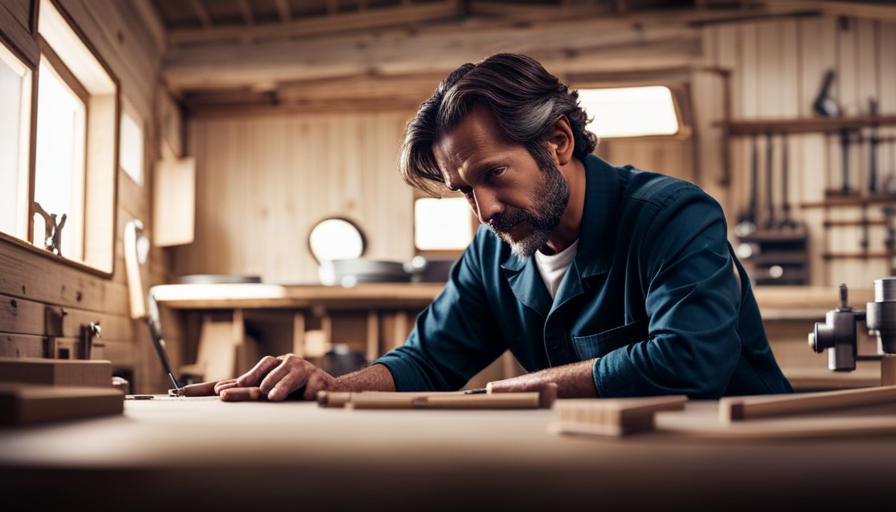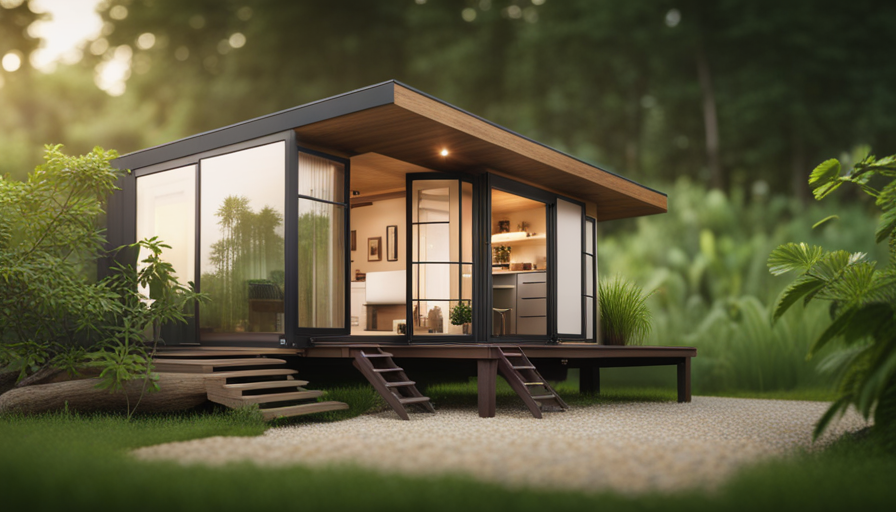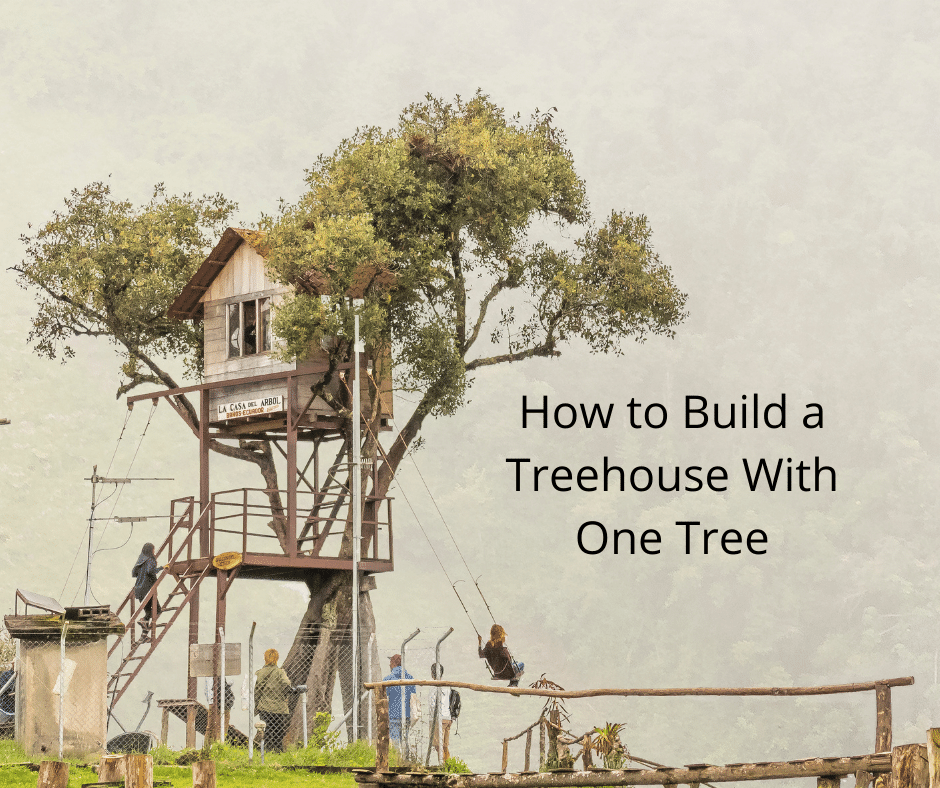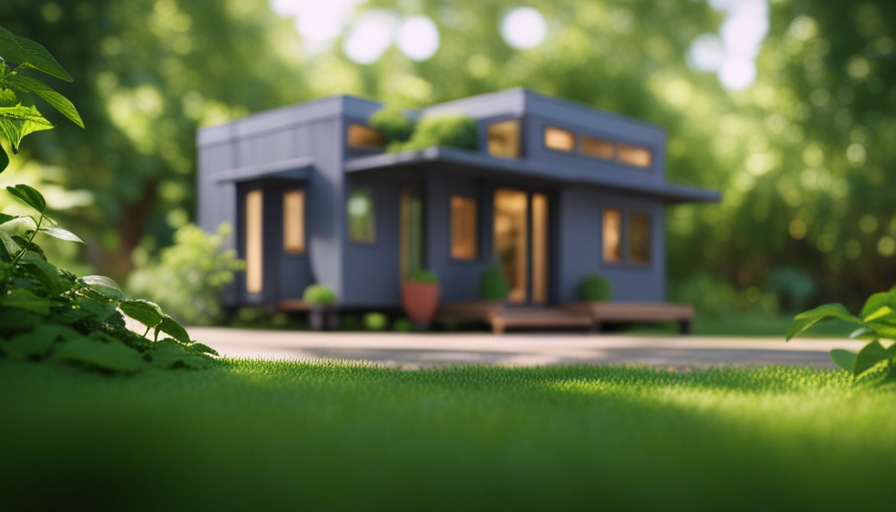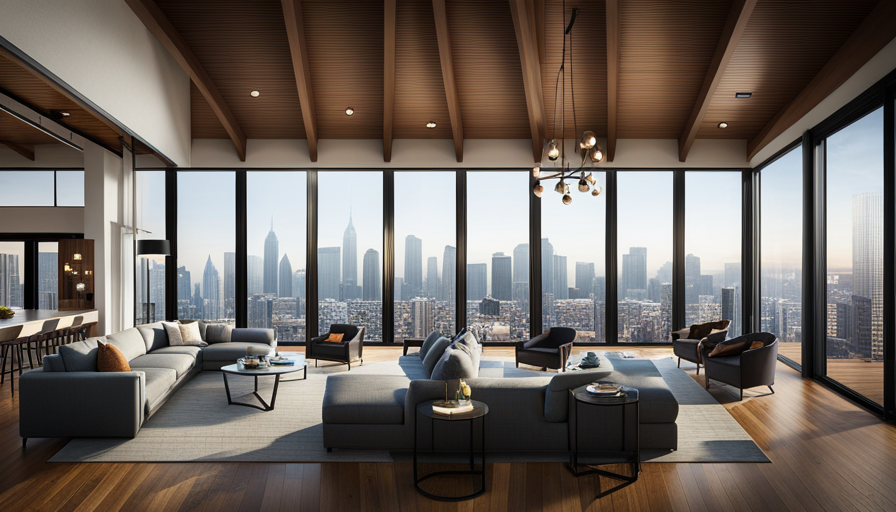Congratulations on choosing to join the tiny house movement by building your very own mobile tiny home! Constructing a tiny house on wheels allows you to embrace a nomadic lifestyle and minimalism, while also enjoying a cozy and personalized space that is truly yours.
In this article, I will guide you through the step-by-step process of building your very own tiny house on wheels.
First things first, it’s important to determine your needs and goals for your tiny house. Are you looking for a full-time residence or a vacation home? Will you be traveling frequently or staying in one place? Once you have a clear vision, it’s time to choose the right trailer for your tiny house. This is the foundation of your home, so it’s crucial to select one that is sturdy and meets your specific requirements.
Next, you’ll need to design your tiny house layout, taking into consideration your desired functionality and space utilization. Once you have your layout finalized, it’s time to gather the materials and tools you’ll need for the construction process. This includes everything from lumber and insulation to plumbing and electrical supplies.
With your materials in hand, it’s time to plan your utilities and systems. This includes determining the placement of your plumbing, electrical, and HVAC systems. It’s important to carefully plan these systems to ensure they are efficient and meet your needs.
Once the planning is complete, it’s time to start the construction process. This includes installing insulation and weatherproofing, building the interior walls, flooring, and ceiling, and finally, installing the plumbing, electrical, and HVAC systems.
Finally, it’s time to add the finishing touches and personalize your tiny house. This is where you can let your creativity shine and make your tiny house truly feel like home. Whether it’s choosing the perfect paint color, adding unique decor, or incorporating your favorite hobbies into the design, the possibilities are endless.
Building a tiny house on wheels is a rewarding and fulfilling journey. With proper planning, the right materials, and a bit of creativity, you can create a space that is not only functional, but also reflects your personal style and preferences. So let’s dive in and get started on building your dream tiny house on wheels!
Key Takeaways
- Determine needs and goals for the tiny house
- Choose a sturdy trailer that meets specific requirements
- Design the tiny house layout with functionality and space utilization in mind
- Install insulation and weatherproofing for energy efficiency and protection
Determine Your Needs and Goals
So, you’re ready to start building your very own tiny house on wheels, but before you dive into the exciting world of construction, let’s take a moment to determine your needs and goals.
The first step is to determine your budget. Figure out how much you’re willing to spend on this project, including the cost of materials, labor, and any additional features you want to include in your tiny house. This will help you make informed decisions throughout the entire process.
Next, consider finding parking locations for your tiny house on wheels. Research local zoning laws and regulations to ensure you can legally park your tiny house in your desired location. Look for places that offer affordable or free parking options, such as RV parks, tiny house communities, or even private landowners who’re open to renting out space.
By determining your budget and finding suitable parking locations, you’re setting a solid foundation for your tiny house journey. With these important aspects in place, you can now move on to choosing the right trailer for your tiny house. This decision will largely depend on the size and weight of your tiny house, as well as any specific features you have in mind.
Choose the Right Trailer for Your Tiny House
First, envision your dream home rolling down the open road, as if it were a majestic bird taking flight. Choosing the right trailer size is crucial when building a tiny house on wheels. It determines the dimensions and weight limitations of your home.
Consider the size of your tiny house and the towing capacity of your vehicle. A larger trailer will provide more living space but may require a heavy-duty truck to tow it. On the other hand, a smaller trailer may limit the size of your home but can be towed by a standard pickup truck.
Once you have determined the right size, it’s important to properly maintain your trailer. Regularly inspect the tires, brakes, and hitch to ensure they are in good condition. Check for any signs of wear or damage and address them promptly. Additionally, make sure to properly distribute the weight of your tiny house on the trailer to avoid overloading any specific area. This will help maintain the trailer’s structural integrity and ensure a safe and smooth ride.
Now that you have chosen the right trailer for your tiny house and learned some tips for trailer maintenance, it’s time to design your tiny house layout.
Design Your Tiny House Layout
Now that you’ve got the perfect trailer, it’s time to envision and create the layout of your cozy abode on the go. Designing your tiny house layout is a crucial step in the building process, as it determines how you’ll utilize the limited space effectively.
Here are four space optimization techniques to consider for your tiny house layout:
-
Multi-functional areas: Incorporate furniture and fixtures that serve multiple purposes. For example, a sofa that can be transformed into a bed or a dining table that can be folded against the wall when not in use.
-
Storage solutions: Utilize every nook and cranny for storage. Install built-in shelves, cabinets, and drawers under staircases, above doorways, or in unused corners. Use vertical space by adding tall cabinets or shelving units.
-
Open floor plan: Opt for an open layout that eliminates unnecessary walls and creates an illusion of a larger space. This allows for more flexibility and better flow between different areas.
-
Natural light: Maximize natural light by incorporating large windows, skylights, and glass doors. This not only makes your tiny house feel more spacious but also reduces the need for artificial lighting during the day.
Now that you’ve designed an efficient layout for your tiny house, it’s time to select the materials and tools you’ll need for the construction phase.
Select the Materials and Tools You’ll Need
To create your dream mobile home, gather the necessary materials and tools that will bring your vision to life, allowing you to construct a space that reflects your unique style and personality. When it comes to building a tiny house on wheels, choosing the right materials and tools is crucial for a successful project. Not only do you want materials that are durable and lightweight, but also ones that fit within your budget.
To help you get started, here is a table outlining some essential materials and tools you’ll need for your tiny house construction:
| Materials | Tools | Additional Equipment |
|---|---|---|
| Lumber | Circular Saw | Nails |
| Insulation | Cordless Drill | Screws |
| Plywood | Level | Hammer |
| Roofing Materials | Tape Measure | Screwdriver |
| Plumbing Supplies | Chalk Line | Clamps |
| Electrical Wiring | Jigsaw | Safety Glasses |
When it comes to tiny house building techniques, it’s important to maximize every inch of space. Consider incorporating built-in storage solutions, such as hidden compartments or multi-functional furniture. Utilize vertical space by installing shelves or utilizing loft areas for sleeping. Additionally, using light colors and open floor plans can create an illusion of more space.
With the materials and tools in hand, you can now move on to planning your utilities and systems for your tiny house. This will ensure that your mobile home is equipped with the necessary amenities for comfortable living.
Plan Your Utilities and Systems
As you embark on creating your dream mobile home, it’s essential to carefully plan and design the utilities and systems that will make your space comfortable and functional. This step is crucial to ensure that your tiny house on wheels meets all your needs and provides a sustainable living environment.
Here are four important considerations for planning your utilities and systems:
-
Choosing the right appliances: Select energy-efficient appliances that are specifically designed for small spaces. Compact appliances such as mini-fridges, stovetops, and washer/dryer combos can maximize functionality without compromising on space.
-
Finding sustainable energy solutions: Explore renewable energy options like solar panels, wind turbines, or even hydroelectric systems, depending on your location and resources. These eco-friendly alternatives can help reduce your carbon footprint and provide a reliable power source for your tiny house.
-
Water and plumbing: Plan your water system carefully, considering both fresh water supply and wastewater management. Install a water storage tank, a water pump, and a filtration system to ensure a reliable water source. Additionally, design your plumbing system to include a composting toilet or a small septic tank.
-
Heating and cooling: Choose an HVAC system that suits the size of your tiny house. Consider options like mini-split systems, radiant floor heating, or even wood-burning stoves for efficient heating. For cooling, portable or ceiling fans can help circulate air effectively.
With the utilities and systems planned out, you can now move onto the next step of constructing the foundation and frame of your tiny house, ensuring a sturdy and secure structure.
As you construct the foundation and frame of your tiny house, you’ll lay the groundwork for the rest of your project.
Construct the Foundation and Frame of Your Tiny House
Once you’ve carefully planned your utilities and systems, it’s time to start constructing the foundation and frame of your mobile home, setting the stage for your dream living space.
Did you know that the average tiny house on wheels takes approximately 400 hours to build from start to finish?
To begin, you’ll need to choose the right foundation materials for your tiny house. Common options include trailer frames or skids. Trailer frames are a popular choice as they provide mobility and durability. Skids, on the other hand, are more suitable for those looking for a semi-permanent setup.
Once you’ve decided on the foundation, it’s time to move on to the framing techniques. When it comes to framing your tiny house, you have two main options: stick framing or steel framing. Stick framing involves using wooden studs and beams to create the structure, while steel framing utilizes steel studs and beams for added strength and durability. Both techniques have their pros and cons, so it’s important to research and choose the one that best suits your needs.
With the foundation and framing complete, the next step is to install insulation and weatherproofing. This will ensure that your tiny house is energy-efficient and protected from the elements.
Install Insulation and Weatherproofing
Now that I’ve laid the foundation and framed my dream living space, it’s time to ensure my tiny house is energy-efficient and protected from the elements by installing insulation and weatherproofing. This step is crucial to keep the interior comfortable and prevent any damage caused by moisture or drafts. Here are some key techniques and materials to consider:
-
Spray foam insulation: This method provides excellent insulation by filling all the nooks and crannies, ensuring a tight seal and preventing air leakage.
-
Fiberglass batts: These are commonly used and easy to install between the studs. They offer good thermal resistance and are cost-effective.
-
Reflective insulation: This type of insulation is ideal for hot climates as it reflects radiant heat away from the house, keeping the interior cool.
-
Weatherproofing tape and sealants: To ensure a watertight seal, use high-quality weatherproofing tape and sealants around windows, doors, and any other gaps.
By carefully selecting the right insulation techniques and weatherproofing materials, I can create a comfortable and energy-efficient living space in my tiny house.
In the next section, I’ll discuss how to build the interior walls, flooring, and ceiling, seamlessly transitioning from the insulation and weatherproofing stage.
Build the Interior Walls, Flooring, and Ceiling
Starting with sturdy and stylish interior walls, I’ll utilize durable materials to create a cozy and captivating living space in my tiny abode.
To maximize space in my tiny house, I’ll explore various tiny house decor ideas that won’t only make the interior visually appealing but also functional. One idea is to incorporate built-in shelving units along the walls, providing ample storage for books, trinkets, and other essentials. Additionally, I’ll consider using multipurpose furniture, like a sofa that doubles as a bed or a folding dining table that can be tucked away when not in use.
Moving on to the flooring, I’ll opt for a combination of hardwood and vinyl planks. Hardwood flooring adds a touch of elegance to the space, while vinyl planks are water-resistant and easy to clean. This combination ensures both durability and aesthetic appeal.
As for the ceiling, I’ll install light-colored panels to create an illusion of height and openness.
To transition into the subsequent section about installing plumbing, electrical, and HVAC systems, I’ll carefully plan the placement of walls and consider the accessibility needed for these systems. By creating functional and well-designed interior walls, flooring, and ceiling, I’ll have a solid foundation to seamlessly integrate the necessary systems into my tiny house.
Install Plumbing, Electrical, and HVAC Systems
With the installation of essential plumbing, electrical, and HVAC systems, the comfort and functionality of my cozy sanctuary will reach new heights.
Here are some tips for troubleshooting plumbing issues in a tiny house:
- Regularly check for leaks or drips in the plumbing system.
- Use low-flow fixtures and appliances to conserve water.
- Insulate the pipes to prevent freezing during colder months.
- Install a water filtration system to ensure clean and safe drinking water.
- Consider using composting toilets to reduce water usage and eliminate the need for a traditional sewage system.
Additionally, I’ve opted to power my tiny house with solar energy, and here are the benefits of using solar power for electrical needs:
- It’s environmentally friendly and reduces carbon footprint.
- It provides a reliable and independent source of energy.
- Solar panels can be installed on the roof, saving space and maximizing efficiency.
- It saves money on electricity bills in the long run.
- Solar power can be stored in batteries, ensuring a continuous power supply even during cloudy days.
As I move forward to add the finishing touches and personalize my tiny house, I’m excited to see my vision come to life.
Add the Finishing Touches and Personalize Your Tiny House
As I put the final touches on my cozy sanctuary, I can’t help but feel a sense of excitement and anticipation for how I will personalize my tiny abode. Adding personal touches to my tiny house on wheels is what will truly make it feel like home. One of the first areas I focused on was decorating the exterior, as it sets the tone for the entire space.
To make my tiny house stand out and reflect my personality, I decided to create a beautiful outdoor seating area. I placed a rustic wooden table and chairs under a canopy of twinkling string lights. This not only provides a welcoming space for entertaining guests but also allows me to enjoy the fresh air and nature around me.
In addition to the seating area, I wanted to add some greenery to the exterior of my tiny house. I opted for a vertical garden, using a combination of hanging planters and trellises. This not only adds a touch of beauty to the exterior but also helps to create a more sustainable and eco-friendly living environment.
To evoke emotion and create a sense of warmth, I decided to incorporate a 2 column and 3 row table into this section. This table showcases different decorating ideas for the exterior of a tiny house, including options for paint colors, window treatments, and outdoor decor. By providing this visual representation, I hope to inspire others to personalize their own tiny houses and make them truly unique.
As I continue to add the finishing touches and personalize my tiny house on wheels, I am filled with a sense of pride and satisfaction. It’s incredible how such a small space can become a reflection of who I am and what I value. I can’t wait to share my cozy sanctuary with others and inspire them to create their own personalized tiny homes.
Frequently Asked Questions
How much does it cost to build a tiny house on wheels?
Building a tiny house on wheels can be a cost-effective alternative to traditional housing. The cost breakdown for such a project can vary greatly depending on factors like size, materials, and location.
On average, it can cost between $20,000 and $80,000 to build a tiny house on wheels. Financing options include personal savings, loans, or crowdfunding. It’s important to carefully plan and research to ensure you stay within your budget and find the best financing option for your needs.
Can I legally live in a tiny house on wheels?
Yes, you can legally live in a tiny house on wheels, but there are some regulations and legal restrictions you need to be aware of.
Tiny house regulations vary from state to state and even city to city, so it’s important to do thorough research before making any plans. Some areas have minimum square footage requirements, while others may require the tiny house to be parked in a designated area.
It’s crucial to comply with these regulations to avoid any legal issues.
How do I tow a tiny house on wheels safely?
To tow a tiny house on wheels safely, there are a few towing tips to keep in mind.
First, ensure that the weight distribution is properly balanced. This will help maintain stability while on the road.
Additionally, make sure to secure all loose items inside the house to prevent damage during transport.
It’s also crucial to check the tires, brakes, and lights before hitting the road.
Lastly, drive cautiously and be mindful of the increased length and weight of your tiny house while towing.
What are the maintenance requirements for a tiny house on wheels?
Maintaining a tiny house on wheels is crucial to ensure its longevity. According to a study by TinyHouseBuild.com, an average tiny house owner spends around $1,000-$2,000 annually on maintenance and repairs.
To keep your tiny house in top shape, regular inspections of the exterior, interior, and mechanical systems are essential. This includes checking for leaks, inspecting the plumbing and electrical systems, and ensuring the tires and trailer are in good condition.
Promptly addressing any issues will help prevent costly repairs down the road.
Where can I park my tiny house on wheels?
When it comes to parking my tiny house on wheels, I have a few options to consider.
Firstly, I need to find out about the zoning regulations in the area where I plan to park. Some areas have specific rules and restrictions for tiny houses on wheels. It’s important to research and comply with these regulations to avoid any legal issues.
Additionally, I can explore different parking options such as RV parks, campgrounds, tiny house communities, or even private land agreements.
Conclusion
Well, there you have it, folks! Building a tiny house on wheels is just a breeze. From determining your needs and goals to adding the finishing touches, it’s a piece of cake.
Who needs a spacious home when you can have a tiny one on wheels, right? So go ahead, embark on this adventure and enjoy the irony of living in a space that’s both cramped and liberating. Trust me, it’s an experience you won’t forget!
Hi, I’m Emma. I’m the Editor in Chief of Tiny House 43, a blog all about tiny houses. While tree houses are often associated with childhood, they can be the perfect adult retreat. They offer a cozy space to relax and unwind, surrounded by nature. And since they’re typically built on stilts or raised platforms, they offer stunning views that traditional homes simply can’t match. If you’re looking for a unique and romantic getaway, a tree house tiny house might just be the perfect option.
